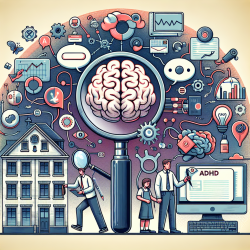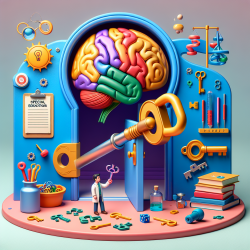Introduction
Attention Deficit Hyperactivity Disorder (ADHD) is a topic of intense debate and scrutiny, particularly in how it is presented to parents and educators. A recent discursive analysis of the National Institute of Mental Health's (NIMH) presentation of ADHD offers valuable insights for practitioners in the field of special education. This blog post will explore these insights and suggest ways practitioners can improve their skills by implementing research outcomes or conducting further studies.
Understanding ADHD through Discursive Analysis
The research article titled "A discursive analysis concerning information on 'ADHD' presented to parents by the National Institute of Mental Health (USA)" provides a critical look at how ADHD is framed. The analysis highlights the predominance of the biomedical model in explaining ADHD, often overshadowing other contextual factors that may contribute to a child's behavior.
Key Findings and Implications
Several key findings from the research can guide practitioners:
- Medicalization vs. Contextual Understanding: The analysis points out that ADHD is often presented as a disorder with a biomedical origin, emphasizing medication as a primary treatment. This approach can overshadow the role of contextual factors such as family dynamics, educational settings, and social circumstances.
- Parental Guidance: The NIMH document advises parents to seek early diagnosis and treatment, primarily through medication. Practitioners should encourage a more holistic approach, considering environmental and relational factors that might influence a child's behavior.
- Role of Educators: Educators are often positioned as extensions of the medical profession, focusing on managing symptoms rather than understanding underlying causes. Practitioners should advocate for training that equips educators to consider broader social and emotional contexts.
Encouraging Further Research
The discursive analysis suggests that more research is needed to explore the impact of contextual factors on ADHD. Practitioners can contribute by conducting studies that examine the role of family dynamics, cultural influences, and educational practices in shaping children's behaviors. Additionally, exploring alternative therapeutic approaches that emphasize emotional and relational development could provide more comprehensive support for children diagnosed with ADHD.
Conclusion
By understanding the limitations of a purely biomedical approach to ADHD, practitioners can adopt a more nuanced perspective that considers the whole child. Encouraging further research and adopting a holistic approach can lead to more effective interventions and support for children with ADHD.
To read the original research paper, please follow this link: A discursive analysis concerning information on “ADHD” presented to parents by the National Institute of Mental Health (USA).










